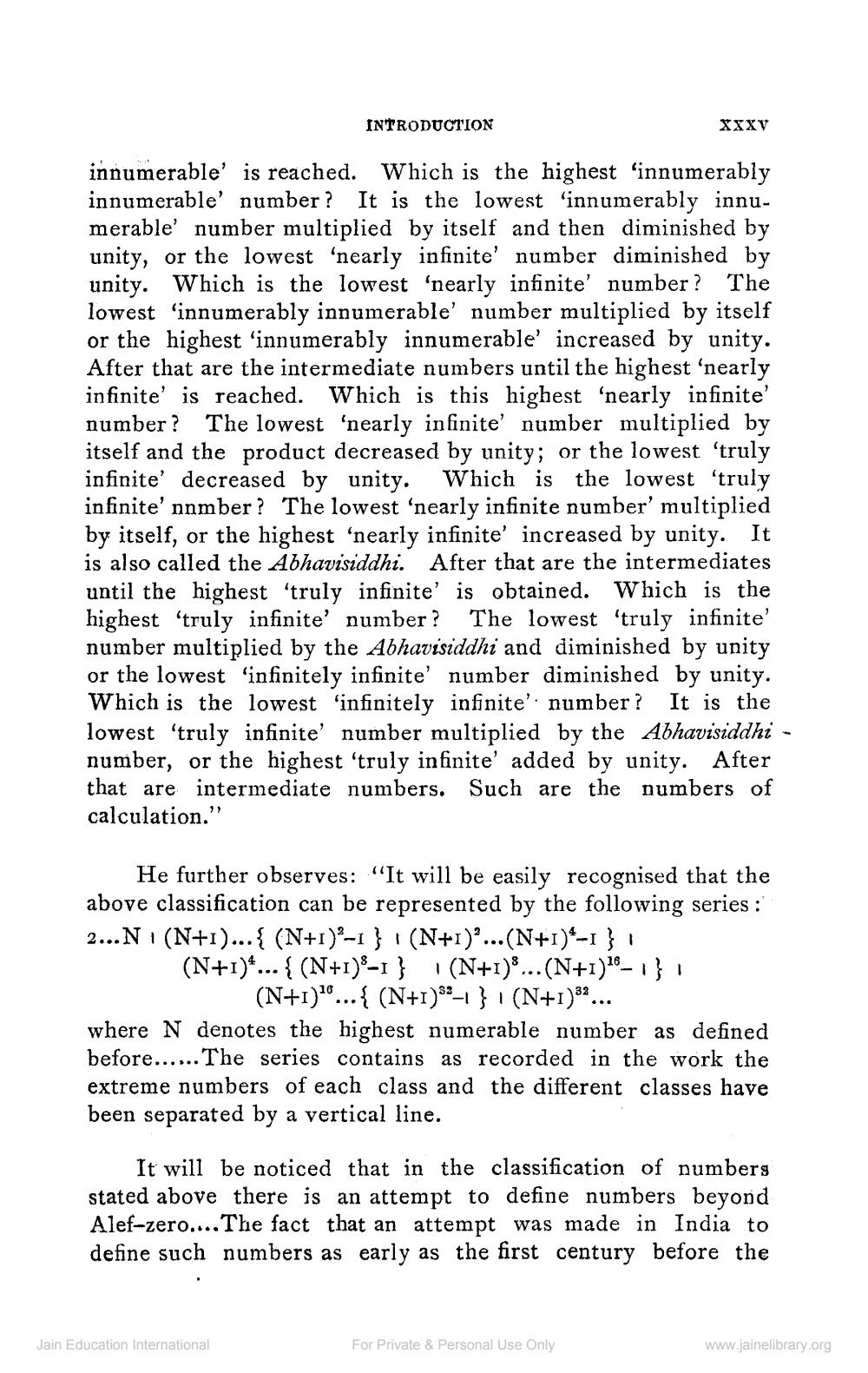________________
INTRODUCTION
XXXV
innumerable' is reached. Which is the highest 'innumerably innumerable' number? It is the lowest 'innumerably innumerable' number multiplied by itself and then diminished by unity, or the lowest 'nearly infinite' number diminished by unity. Which is the lowest 'nearly infinite' number? The lowest 'innumerably innumerable' number multiplied by itself or the highest ‘innumerably innumerable' increased by unity. After that are the intermediate numbers until the highest 'nearly infinite' is reached. Which is this highest 'nearly infinite' number? The lowest 'nearly infinite number multiplied by itself and the product decreased by unity; or the lowest 'truly infinite' decreased by unity. Which is the lowest 'truly infinite' nnmber? The lowest 'nearly infinite number' multiplied by itself, or the highest 'nearly infinite' increased by unity. It is also called the Abhavisiddhi. After that are the intermediates until the highest 'truly infinite' is obtained. Which is the highest 'truly infinite number? The lowest 'truly infinite' number multiplied by the Abhavisiddhi and diminished by unity or the lowest 'infinitely infinite number diminished by unity. Which is the lowest 'infinitely infinite'. number? It is the lowest 'truly infinite number multiplied by the Abhavisiddhi - number, or the highest 'truly infinite' added by unity. After that are intermediate numbers. Such are the numbers of calculation."
He further observes: "It will be easily recognised that the above classification can be represented by the following series : 2...NI (N+1)... { (N+1)-1} | (N+1)....(N+1)-1},
(N+1)*... {(N+1)-1} (N+1)!... (N+1)16-1},
(N+1)... { (N+1)*2–1} | (N+1)32... where N denotes the highest numerable number as defined before...... The series contains as recorded in the work the extreme numbers of each class and the different classes have been separated by a vertical line.
It will be noticed that in the classification of numberg stated above there is an attempt to define numbers beyond Alef-zero.... The fact that an attempt was made in India to define such numbers as early as the first century before the
Jain Education International
For Private & Personal Use Only
www.jainelibrary.org




